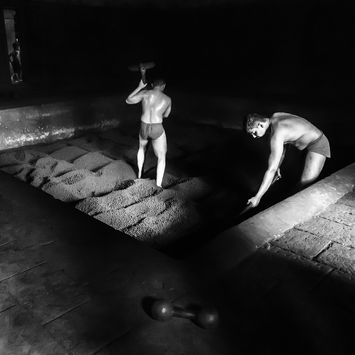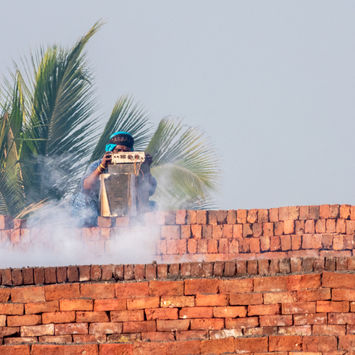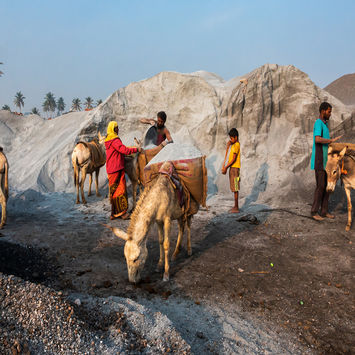

Kushti
Kushti or Pehlwani is a form of wrestling that is prevalent in the Indian subcontinent in many states. It is considered to be a descendant of the more diverse art of Malyutham. Kushti mainly consists of grappling matches where the goal is to pin an opponent, where his back and shoulders are in contact with the floor.
Vyayam or physical exercise is an integral part of Kushti training. Exercises that employ only bodyweight like the Suryanamaskar, Danda, Baski and a few other exercises from Hatha Yoga are employed. The training also uses weights like clubs, maces and a few weights that are worn on the body like the neck brace are also used.
The training is designed to build muscular strength, endurance and flexibility. It improves coordination and strengthens the joints and connective tissues of the body. It also trains the heart and lungs to work under strain, and improves performance in any other type of physical regimen.


Jaggary making in Kolhapur
The place where jaggery is made is called Gurahla. Jaggery making is a tedious business involving many steps. First, export quality sugarcane brought from the fields is crushed using a power-driven crusher. The extracted sugarcane juice is directly stored in a large concrete storage tank. The remaining wood pulp is scattered around for drying to be used later as fuelwood. The juice is transferred into a large iron vessel to be heated on a furnace using a motor driven machine.
The contents are heated for more than an hour and all the wood particles are cleared by skimming the froth. The juice gets significantly reduced by the boiling process and begins to thicken up and turns golden in colour. It is stirred continuously using a long spatula and checked constantly to determine its thickness. If it forms many threads, then it is deemed ready. It is then poured into a shallow flat-bottomed tank to cool and solidify. The jaggery becomes a soft solid upon cooling and is pressed into the desired shape to be sold in the market. The quality of the jaggery is judged by its colour – brown means high in impurities and golden yellow means relatively pure.


Brick Factory Work
Small-scale plants, which can operate without electricity, are also particularly suitable for rural areas such as Brick Manufacturing Plant or Industry. Manufacturing of bricks consists of the following 4 operations or steps.
1. Preparation of brick clay or brick earth 2. Moulding of bricks 3. Air drying of bricks 4. Burning of bricks


Earthen Pot Making
Earthen pots are traditionally used for cooking, storing rice, storing water, and more importantly in Ayurveda, for making medicines including bhasmas, powerful metallic preparations.
Collecting the Mud
The earth pot makers go and collect very specific mud. For example, certain bhasma preparations need specific mud to withstand the heat required, so different mud will be gathered for that vs for an earthen pot used for storing rice.
The Slurry
Once the mud is ready, water is added and it is made into a slurry: It is then made into a thin fine paste, taking the form of mud that is of harder consistency. The electricity powered turning top is used to rotate the mud, Workers manually use wooden sticks to tap the pots and apply water to give them such a fine uniform round shape, The shape has to be uniform. Otherwise the pots will break! So the technique has to be uniform!
The Furnace
Once hundreds of such pots are ready, they will be loaded inside the furnace, The fire will run somewhere between 5 - 7 days continuously! The pots will then slowly cool down and will be removed for use!After burning, the color of the earthen pot will turn from dark brown to red!


Canesugar Workers Life
this is a insight of canesugar workers,who migrate from draught area in search of work to sugar factories,and reside in huts made temporarily ,one can see the happiness inspite of all the struggles

















































































































































